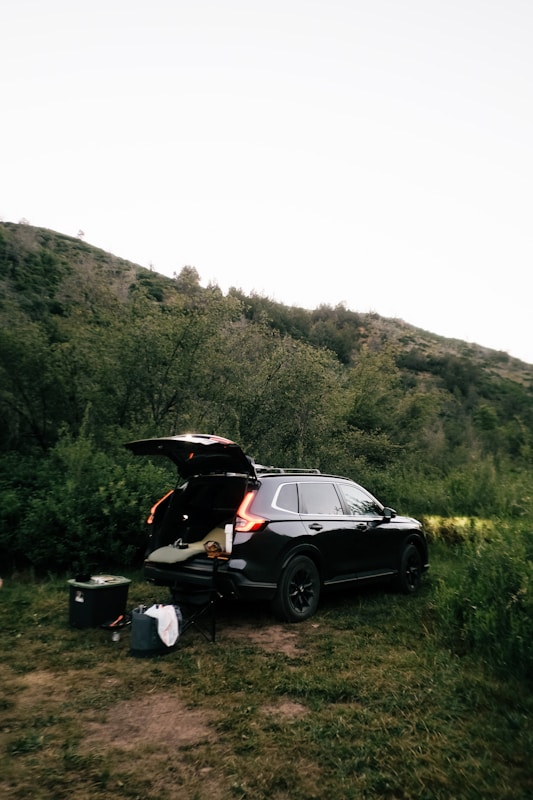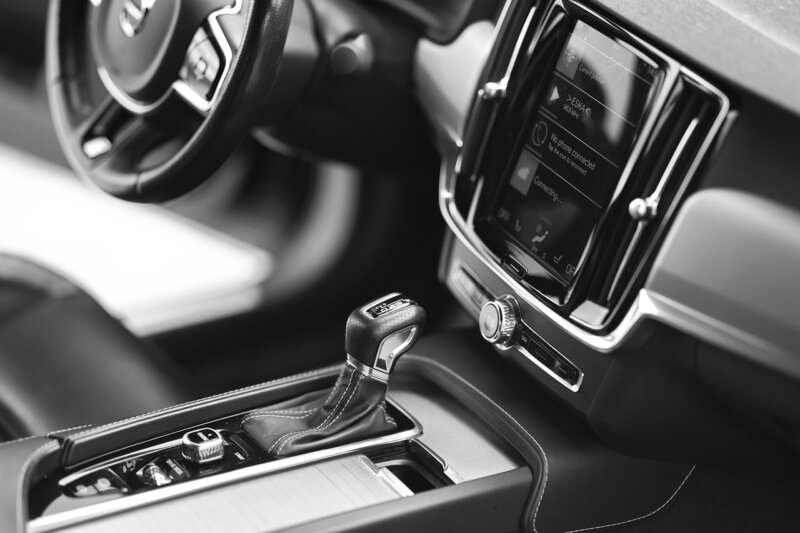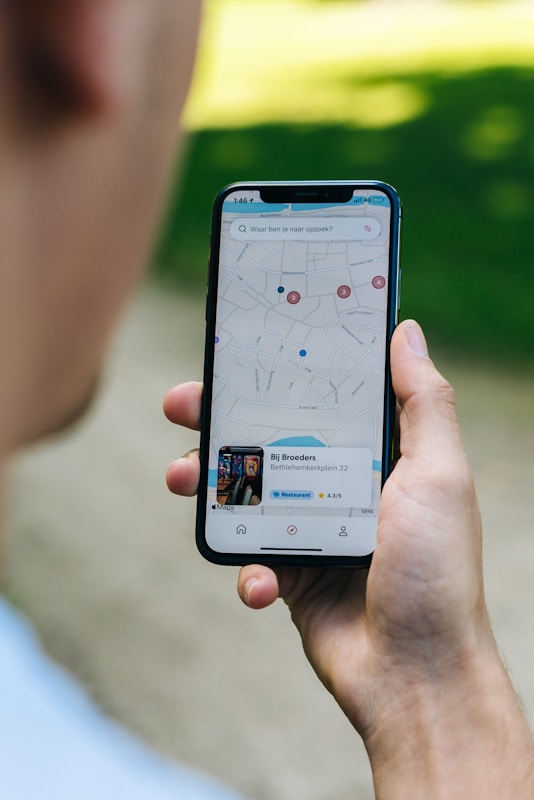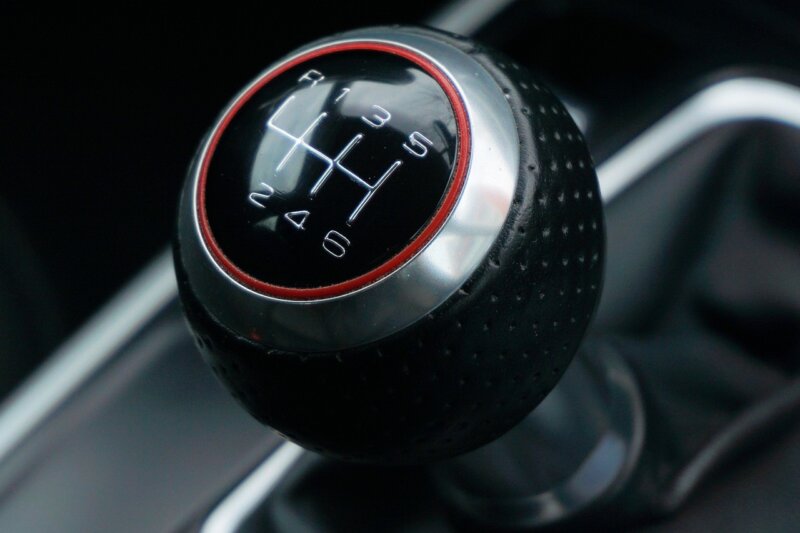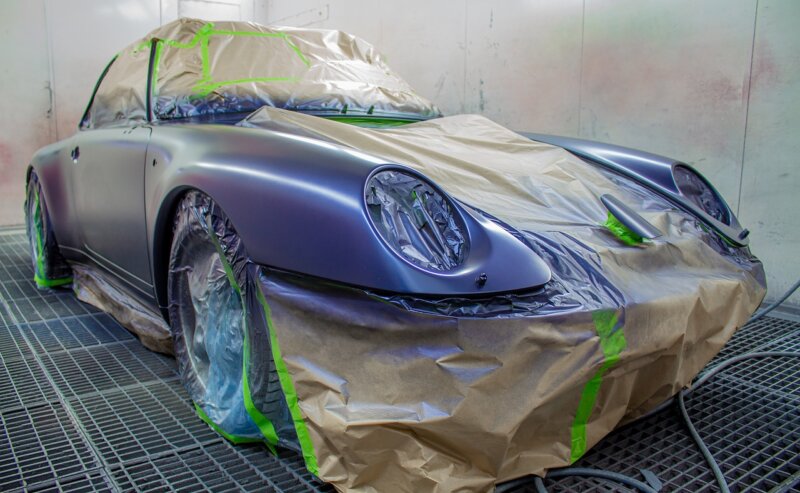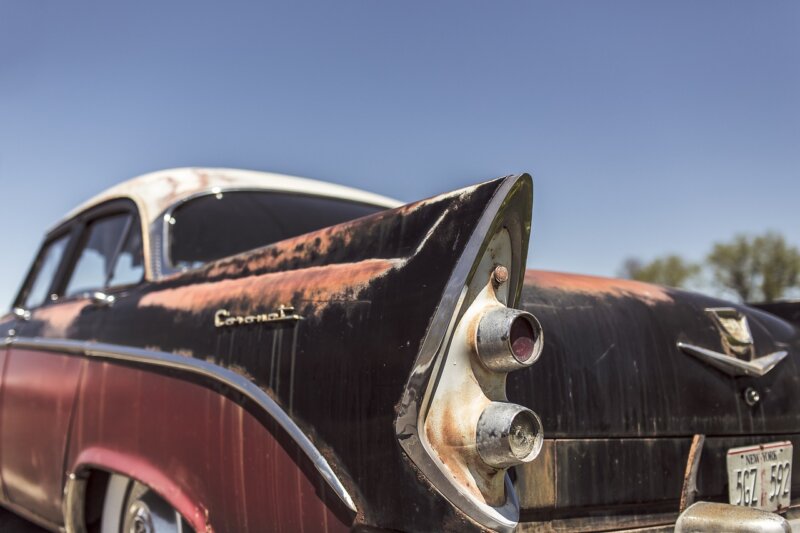Car camping can feel simple with the right setup. You need sleep, steady power, and clean air. Over 140 campers rated the Hele Box sleeping platform near perfect for comfort and ease.
This guide shares practical steps you can use right away. Learn how to build a solid sleeping platform, pick a reliable power system, and keep airflow safe at night. Pack once, then relax at camp.
Essential Components of a Car Camping Setup
A smart car camping setup covers three basics, sleep systems, power, and ventilation. Nail these parts, and every trip feels smoother and more comfortable.
Sleeping Platforms
A sleeping platform turns the back of a vehicle into a bed. The Hele Box is a popular choice for car camping. It fits common models like the Subaru Forester and Toyota 4Runner, so sizing is easy for many drivers.
The platform creates storage under the bed and sets up fast. The sleep surface measures six feet long and twenty four inches wide. Height adjusts from 8.75 to 14 inches. That range leaves space for bins, a camping table, or a portable toilet below.
Price sits at $399, or $499 with a sleeping pad during the current deal. Users rate comfort and setup very high, near 5 out of 5 stars. For solo trips, it offers a stable and packable sleep system.
Power Solutions
Reliable power keeps phones, lights, and a small fridge running. The Goal Zero Yeti 1000X stores 983 watt hours. A watt hour is the energy a device uses in one hour. It has AC outlets, a 12 volt car port, and USB C ports for fast charging.
The Jackery 500 is a lighter option. It can hold a charge for about a week in storage. Using a power station prevents draining the vehicle battery at camp.
Solar is helpful at sunny sites. SOLARSAGA100W panels can refill most portable stations during daylight hours. Carry a small backup power bank too. If the main unit drops low, the backup can cover lights and phones for the night.
Plan for every device that needs juice. List run times and recharge needs before leaving home. Good planning prevents stress later.
Ventilation Systems
After power, focus on airflow. Fresh air controls heat and keeps sleep safe and comfortable. It also reduces the risk of carbon monoxide, a deadly gas with no smell.
Window screens allow air in and keep bugs out. A magnetic mesh on the sunroof is a quick fix. Add a small fan to move stale air out and pull cooler air in.
Park in shade or face into the breeze when possible. Never idle the engine for airflow. That raises carbon monoxide risk. Cracking windows in a safe location helps avoid a stuffy cabin during overnight parking.
Building a Comfortable Sleeping Platform
A good sleep platform saves space and improves rest. You wake up ready for the trail, not sore from the seat. Plan for support, storage, and a mattress that fits your body.
Lightweight and Adjustable Platforms
The Hele Box offers a strong but light platform that works in many cars. Dual lock stability technology keeps the deck from wobbling. Height adjusts from 8.75 to 14 inches, so you can tune clearance for storage or comfort.
The sleep surface measures six feet by twenty four inches. That size fits most single sleepers with room for shoulders. The design also protects gear stored below from rolling around.
Owners rate the platform near perfect, about 4.99 out of 5. The high score reflects easy setup, stable support, and smart storage for outdoor sleeping.
Storage Integration for Gear
Space under the platform is prime real estate. Use low bins for a compact storage system. Group items by use, like cooking, sleep, tools, and hygiene.
- Daily use on top, flashlight, wipes, water, and charger.
- Medium use in middle bins, cook kit, food, and stove.
- Rare use in deeper bins, repair kit and backups.
The Hele Box weighs about 25 pounds, so moving it is simple. Its carrying case doubles as storage for bedding and small items. For two campers, the Hele Box Duo expands capacity while keeping a flat, stable bed.
Mattress and Bedding Options
Pick a sleep pad that matches body and climate. The Hele Box supports pads and mattresses up to 78 inches by 26 inches. That covers many inflatable mattress options and most foam pads.
Memory foam adds comfort and reduces cold from the vehicle floor. Inflatable pads pack small and are easy to adjust for firmness. A quick example, a 3 inch foam topper on a firm board can feel like home.
For couples, the Hele Box Duo allows two sleeping pads side by side. Add simple window insulation at night to hold warmth. Use a quality sleeping bag or warm blankets for cold weather camping.
Reliable Power Options for Car Camping
Power planning makes off grid travel smoother. Choose a portable power station, add solar for recharging, and bring a few battery powered accessories. That mix keeps devices ready through long weekends.
Portable Power Stations
The Goal Zero Yeti 1000X gives 983 watt hours of storage. That capacity supports phones, tablets, and a small 12 volt fridge for hours. AC outlets support laptop bricks. USB C ports handle fast charging for newer devices.
Portable power stations provide clean, quiet energy. No fumes, and no engine idling. Pair a station with a watt meter if you want precise usage data. That helps with trip planning.
Pack the station with the charging cables you actually use. Keep the unit charged at home before each trip.
Solar Panels and Charging Systems
Portable solar panels harvest energy while parked. Modern panels still produce some power on cloudy days. A 100 watt panel can refill many mid sized stations over a full day in the sun.
Match panel size to your load. Add up device watt draw, then estimate daily hours used. Phones and a fan may need less, a fridge can push usage higher. Aim to arrive at camp with 50 percent battery or more.
- Use a charge controller if your system needs one.
- Place panels at the best angle for the sun.
- Shade kills output, so move panels as light shifts.
Store extra power in the battery for night. That keeps lights, fans, and a pump running after sunset without worry.
Battery-Powered Accessories
Small battery tools add comfort without big drains. The Ignik Backside Heated Pad uses about 20 watts. It can warm a seat or bed area on cold nights.
For light, the Black Diamond Volt Lantern outputs 250 lumens. It can run up to 24 hours on high. Keep a headlamp handy as a backup.
Carry spare AA or 18650 batteries based on your gear. A compact USB power bank can charge a phone and lantern between solar cycles.
Effective Ventilation Solutions
Fresh air is key to good sleep in a closed space. The right ventilation system lowers heat, reduces moisture, and limits fogged windows. It also protects health by clearing exhaust and cooking fumes.
Window Screens for Fresh Air
Window screens allow airflow and stop insects. Many universal mesh screens stretch over the frame and seal with magnets. They pack light and install in seconds.
Even a small breeze helps. Crack two windows on opposite sides to create a cross draft. That lowers humidity and reduces condensation on glass by morning.
Portable Fans and Ventilation Systems
Portable fans move air when the wind dies. USB fans run from a power bank or station. Battery powered fans work too, but check runtime before bed.
Place the fan to pull cooler air in and push warm air out. A magnetic mesh on the sunroof improves air exchange. Some vehicles support low profile roof vents. If adding a vent, seal edges well to prevent leaks.
Never idle the engine for airflow. Carbon monoxide can build up. Use a detector if sleeping in a vehicle. A small CO alarm adds a layer of safety.
Insulation and Privacy Window Covers
Thermal covers control heat flow. In cold weather, insulation keeps warmth inside. In summer, reflective shades bounce sun and keep the cabin cooler.
Choose custom or universal covers. Thick fabric or layered panels work well. They also add privacy and reduce road noise for better sleep quality.
To reduce condensation, wipe windows in the morning and air out the cabin. Dry bedding in the sun at camp when needed.
Tips for Enhancing Comfort on the Road
Small upgrades can change long travel days. Pack smarter, reduce noise and light at night, and keep water close. These habits improve comfort while camping.
Organizing Gear for Easy Access
Organized storage speeds setup at camp. The Hele Box has built in space under the bed. Adjustable legs keep the platform stable on uneven ground.
- Make a checklist for camping essentials.
- Pack by zones, sleep, cook, tools, and hygiene.
- Use clear bins and label them.
- Keep daily items within arm’s reach.
Put heavy items low and near the rear door. That improves balance and makes loading safer. Review gear after each trip and remove what you did not use.
Managing Noise and Light for Better Sleep
Quiet and darkness help you fall asleep faster. Use earplugs or a white noise app to soften traffic sounds. A soft playlist can work too.
Cover windows with curtains or stick on shades to block light. Darker interiors cue the brain for rest. Pair light control with steady airflow for the best result.
Keeping Water and Essentials Handy
Place a 5 gallon water jug where you can reach it fast. A 2 gallon Rinse Kit Plus handles quick wash ups. Keep a small hand towel with it.
Build a grab bag for night needs, headlamp, power bank, wet wipes, bug spray, and meds. Add sunscreen and a basic first aid kit. Store maps or an offline app for areas without service.
Set these items near the sleeping platform. That way you can reach them without digging through bins in the dark.
Bottom Line
Car camping gets easier with a simple plan. A stable sleeping platform like the Hele Box improves comfort and storage. Reliable power from a portable station and solar panels keeps devices charged. A safe ventilation system brings in fresh air and helps you sleep cooler.
With a few focused choices, your vehicle conversion can feel like a small mobile home. Pack smart, test your setup at home, and adjust as you learn. Then enjoy better sleep, steady power, and fresh air on every trip.

